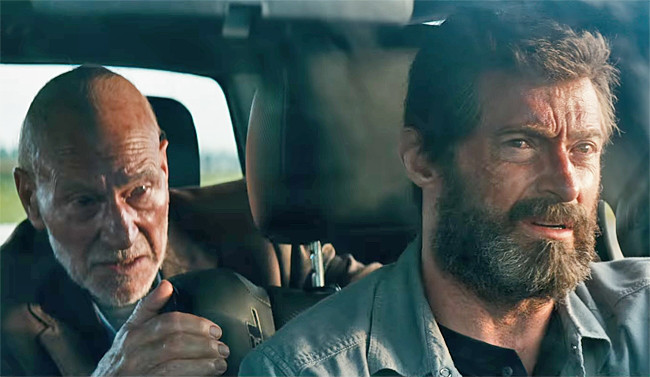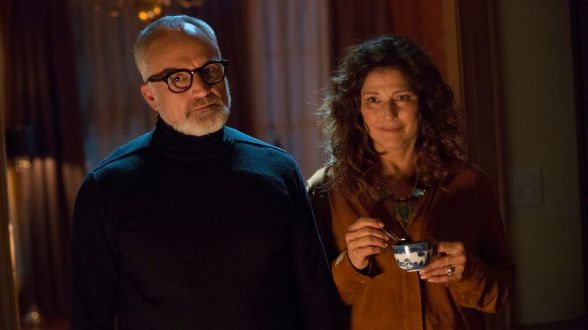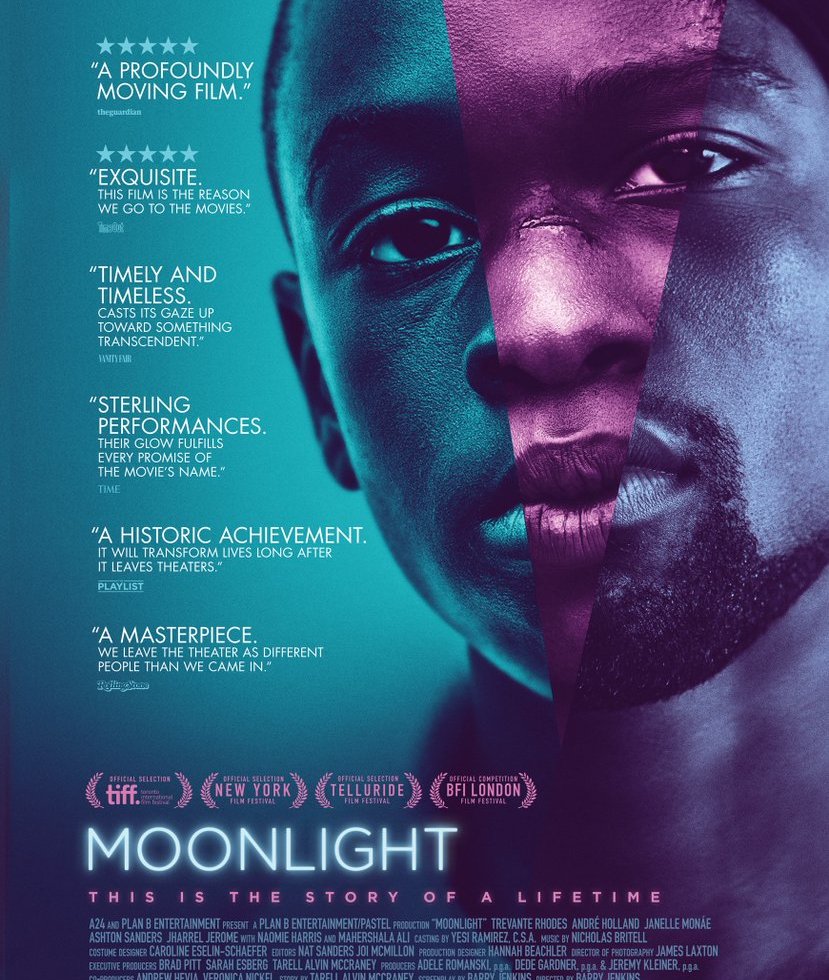Hidden Figures (2016)
Director: Theodore Melfi
A competent film about a fascinating and worthy topic, though a film that is not without its weaknesses.
One of a few "based on true events" Best Picture nominees, along with Lion and Hacksaw Ridge, Hidden Figures tells the story of a trio of African-American women who were among a group of such women working as computers (the word referred to human mathematicians back then) for NASA during the early years of the space race in the early 1960s. All three were highly intelligent, extremely capable people who excelled at their jobs. Despite this, they were the victims of the systemic segregation still in effect in many southern states, including where they worked in Virginia. Over the course of a couple of years, the three women - Katherine Johnson, Dorothy Vaughan, and Mary Jackson- each make their marks, rise through the ranks, and even hurdle several considerable social obstacles, ultimately making significant contributions to NASA's successfully putting men into space.
Like many movies based on real events and people, the movie's greatest asset is probably the fact that it is based on reality. The three women who are the focus of the movie were clearly amazing people, not only because of their sheer talents but also because they had to fight harder than their male and/or white colleagues to achieve their recognition. Beyond the primary tales of Johnson, Vaughan, and Jackson, there is also the ever-fascinating tale of the space race in the 1960s. Anyone curious about this rich subject is likely to enjoy the insight which this movie offers into some of the inner-workings of the scale and complexity of one of the most outstanding human accomplishments of the 20th century. Hidden Figures does a solid job covering the tales of this accomplishment and how the three main characters were a part of it.
Unfortunately, the movie stumbles when it comes to some of the more dramatic elements of the movie. Rather than letting the impressive facts speak for themselves, the writers and director opted to "Hollywood" up several aspects of the characters' lives and professional victories. There are ample examples of it, but two quick ones: first is the oh-so-cute daughters of Katharine Johnson. The film's portrayal of these kids is nearly as saccharine as what you'd find on a mainstream family sitcom, with the children reduced to mere props akin to cute stuffed animals. The second is a painfully forced scene of Johnson's boss, played by Kevin Costner, physically breaking down the "Colored Bathroom" with a crowbar. This sequence is so ham-fisted and staged that I was cringing for the entire duration of the sequence. The shame of these and other similar elements of the movie is that I felt that it did a serious disservice to the actual women portrayed in the movie. By adding the gloss of more palatable, artificial, or overly dramatic elements, some of which were total fabrications, it sends the story into the realm of movie fable. And that's not where these women belong. They belong in similar places as the engineers and NASA employees more deftly and subtly, if still dramatically, portrayed in popular films like The Right Stuff or Apollo 13. Those films didn't need to overdose us on sappiness or melodramatic nonsense. Neither did Hidden Figures, and it's a shame that director Theodore Melfi didn't see it that way.
As my wife pointed out, this is a movie that probably everyone should see, as long as they don't plan on reading the book (something I am likely to do). The story of these three women and their struggle to have their talents recognized is one well worth knowing, even if it is done through this occasionally clumsy film adaptation.
Hacksaw Ridge (2016)
Director: Mel Gibson
Another dramatization of real events, Hacksaw Ridge is one of the better and most unique war movies I've ever seen.
The movie tells the story of real-life army medic Desmond Doss, a Seventh Day Adventist who joins the Army in the midst of World War II, based on a sense of duty. The rub is that Doss also has a very strict, pacifist code that precludes his so much as touching a weapon. Although Doss declares that he seeks to join only as a medic, his refusal to touch a weapon causes incredible hardship for him during boot camp, where he stands starkly apart from his fellow recruits. After a tense legal battle, Doss is allowed to maintain his pacifism and become trained as an Army medic. When he and his platoon are deployed to Okinawa, Doss performs one of the most singular and arduous acts of bravery one could imagine. After much of his squad is gunned down by Japanese fighters on the nearly-impenetrable "Hacksaw" Ridge, Doss spends hour after hour rescuing wounded comrades by dragging them to safety under whatever cover he can find. Doss's actions and bravery won him the Congressional Medal of Honor, making him the very first non-combatant to receive the U.S. military's most prestigious award.
Hacksaw Ridge is a great example of a movie whose second and, especially, third acts make up for the painful sins of its first act. In the first part of the movie, we follow Doss mostly through his "gee-shucks," American-as-apple-pie courtship of his eventual wife, Dorothy. While there are some darker elements which add some depth to Doss's character in these early scenes, there is a rather corny feel to much of it. When he begins boot camp, it doesn't seem as if things will get much better, as we very quickly get perennial fast-talking funnyman Vince Vaughan as Doss's drill instructor, trying his best to impersonate Gunnery Sergeant Hartman from Full Metal Jacket. Many of these opening moments in training smack far too much of unoriginality, and I was honestly starting to worry about my enjoyment of the movie.
But then the movie takes a turn. The day that the recruits are to receive their first training with rifles, Doss refuses to touch his. At this point, the theme and the tone of the movie shift quite dramatically and so much for the better. What up to this point had felt mostly derivative becomes a far more interesting analysis of a man's core principles - principles, by the way, that any human should spend more than a little time giving serious consideration. Watching Doss and his fellow soldiers question his dedication to pacifism grows more fascinating as the story progresses, right up to the initial assault on Hacksaw Ridge.
The battle itself is one of the most powerful and graphic displays of "modern" warfare that one is likely to see. In a manner similar to the game-changing opening sequences of Spielberg's Saving Private Ryan, director Mel Gibson pulls absolutely no punches in showing the brutal carnage of front line warfare. In short, it is a horror show. Yes, there are riveting sequences depicting Doss's comrades performing exciting acts of bravery and fighting, such as you might find in less profound films. But far outstripping these few, slightly more rousing segments, it is the nighmarish and horrendous nature of large-scale violence that is on display. By creating such a palpable scene of a living hell, Desmond Doss's actions become that much more incredible. Seemingly through sheer faith and will, he drags a staggering amount of humans out of hell, granting them freedom from death. The movie does an outstanding job of driving home the miraculous nature of Doss's heroism, without diminishing the more disturbing aspects of the entire affair.
There are those among us who may, understandably, never want anything to do with Mel Gibson again. I understand this, as by several accounts he seems to be a disturbed and hateful person. That said, one cannot deny that he is an excellent film director, and Hacksaw Ridge is testament to that. I would recommend that anyone not totally put off by Gibson or averse to graphic but non-gratuitous violence give this movie a try. It is likely to be one of the more compelling and memorable war movies you'll see.
Director: Theodore Melfi
A competent film about a fascinating and worthy topic, though a film that is not without its weaknesses.
One of a few "based on true events" Best Picture nominees, along with Lion and Hacksaw Ridge, Hidden Figures tells the story of a trio of African-American women who were among a group of such women working as computers (the word referred to human mathematicians back then) for NASA during the early years of the space race in the early 1960s. All three were highly intelligent, extremely capable people who excelled at their jobs. Despite this, they were the victims of the systemic segregation still in effect in many southern states, including where they worked in Virginia. Over the course of a couple of years, the three women - Katherine Johnson, Dorothy Vaughan, and Mary Jackson- each make their marks, rise through the ranks, and even hurdle several considerable social obstacles, ultimately making significant contributions to NASA's successfully putting men into space.
Like many movies based on real events and people, the movie's greatest asset is probably the fact that it is based on reality. The three women who are the focus of the movie were clearly amazing people, not only because of their sheer talents but also because they had to fight harder than their male and/or white colleagues to achieve their recognition. Beyond the primary tales of Johnson, Vaughan, and Jackson, there is also the ever-fascinating tale of the space race in the 1960s. Anyone curious about this rich subject is likely to enjoy the insight which this movie offers into some of the inner-workings of the scale and complexity of one of the most outstanding human accomplishments of the 20th century. Hidden Figures does a solid job covering the tales of this accomplishment and how the three main characters were a part of it.
 |
| The real Johnson, Vaughan, and Jackson. Their story is great, and one that could have done without some of the schmaltz and overdramatization done in this adaptation. |
As my wife pointed out, this is a movie that probably everyone should see, as long as they don't plan on reading the book (something I am likely to do). The story of these three women and their struggle to have their talents recognized is one well worth knowing, even if it is done through this occasionally clumsy film adaptation.
Hacksaw Ridge (2016)
Director: Mel Gibson
Another dramatization of real events, Hacksaw Ridge is one of the better and most unique war movies I've ever seen.
The movie tells the story of real-life army medic Desmond Doss, a Seventh Day Adventist who joins the Army in the midst of World War II, based on a sense of duty. The rub is that Doss also has a very strict, pacifist code that precludes his so much as touching a weapon. Although Doss declares that he seeks to join only as a medic, his refusal to touch a weapon causes incredible hardship for him during boot camp, where he stands starkly apart from his fellow recruits. After a tense legal battle, Doss is allowed to maintain his pacifism and become trained as an Army medic. When he and his platoon are deployed to Okinawa, Doss performs one of the most singular and arduous acts of bravery one could imagine. After much of his squad is gunned down by Japanese fighters on the nearly-impenetrable "Hacksaw" Ridge, Doss spends hour after hour rescuing wounded comrades by dragging them to safety under whatever cover he can find. Doss's actions and bravery won him the Congressional Medal of Honor, making him the very first non-combatant to receive the U.S. military's most prestigious award.
Hacksaw Ridge is a great example of a movie whose second and, especially, third acts make up for the painful sins of its first act. In the first part of the movie, we follow Doss mostly through his "gee-shucks," American-as-apple-pie courtship of his eventual wife, Dorothy. While there are some darker elements which add some depth to Doss's character in these early scenes, there is a rather corny feel to much of it. When he begins boot camp, it doesn't seem as if things will get much better, as we very quickly get perennial fast-talking funnyman Vince Vaughan as Doss's drill instructor, trying his best to impersonate Gunnery Sergeant Hartman from Full Metal Jacket. Many of these opening moments in training smack far too much of unoriginality, and I was honestly starting to worry about my enjoyment of the movie.
| The insanity, chaos, and brutality of war are conveyed as well in this movie as in nearly any war flick you're likely to watch. |
The battle itself is one of the most powerful and graphic displays of "modern" warfare that one is likely to see. In a manner similar to the game-changing opening sequences of Spielberg's Saving Private Ryan, director Mel Gibson pulls absolutely no punches in showing the brutal carnage of front line warfare. In short, it is a horror show. Yes, there are riveting sequences depicting Doss's comrades performing exciting acts of bravery and fighting, such as you might find in less profound films. But far outstripping these few, slightly more rousing segments, it is the nighmarish and horrendous nature of large-scale violence that is on display. By creating such a palpable scene of a living hell, Desmond Doss's actions become that much more incredible. Seemingly through sheer faith and will, he drags a staggering amount of humans out of hell, granting them freedom from death. The movie does an outstanding job of driving home the miraculous nature of Doss's heroism, without diminishing the more disturbing aspects of the entire affair.
There are those among us who may, understandably, never want anything to do with Mel Gibson again. I understand this, as by several accounts he seems to be a disturbed and hateful person. That said, one cannot deny that he is an excellent film director, and Hacksaw Ridge is testament to that. I would recommend that anyone not totally put off by Gibson or averse to graphic but non-gratuitous violence give this movie a try. It is likely to be one of the more compelling and memorable war movies you'll see.






